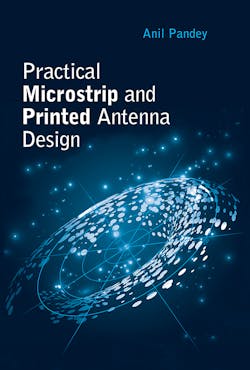The new book titled, “Practical Microstrip and Printed Antenna Design,” is intended to serve as a practical antenna design guide that covers real-world applications. The author, Anil Pandey from Keysight Technologies, geared the book more toward practical antenna design rather than theoretical analysis. Pandey also states that it includes the most useful recent work available from research in the printed and microstrip antenna fields. The guide targets both new antenna engineers and experienced designers alike, as well as those in the academic world.
Chapter 1 introduces various types of printed antennas, such as microstrip, slot, inverted-F, planar inverted-F, and monopole antennas, among others. A table compares 13 different antennas types, describing each one’s radiation pattern, directivity, and bandwidth. Furthermore, the chapter discusses the important specifications associated with antenna design, such as operating frequency, impedance, return loss, radiation pattern, gain, efficiency, and bandwidth.
Also included in the first chapter is a section on analysis and simulation software for antenna design. The book states that transmission-line, cavity, and full-wave models are the most popular models used to analyze printed antennas.
Microstrip antenna design is the focus of Chapter 2. Topics covered include a microstrip antenna design process, with the corresponding steps visually depicted. The chapter also touches on substrate selection and losses in microstrip antennas, plus other key areas of interest.
In addition, Chapter 2 discusses feed techniques, explaining that microstrip patch-antenna elements can be fed by a variety of methods. Specifically, these methods can be grouped into two categories: direct or indirect contact. The author points out that the four most popular feed techniques used are microstrip lines, coaxial probes, proximity coupling, and aperture coupling.
On top of that, Chapter 2 covers the design and electromagnetic (EM) simulation of microstrip antennas. Shown is a design example of a 2.4-GHz microstrip patch antenna.
Among the many topics covered in subsequent chapters are antenna design for wireless communication and mobile phones, smartphone antenna design compliances and measurement, and printed antenna arrays. The book also has a chapter on automotive antennas, as well as one on phased arrays and beamforming networks for 5G communication systems.


